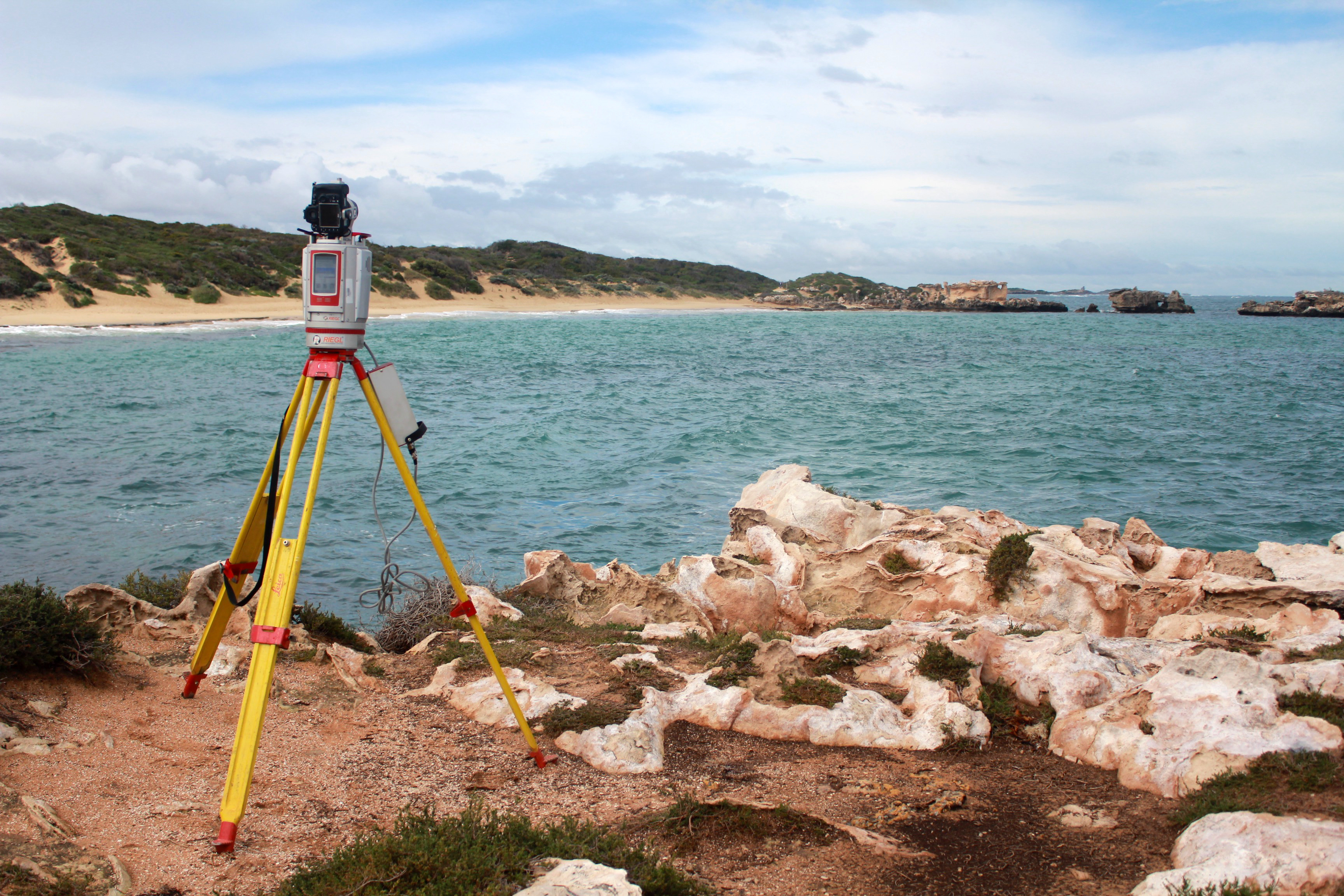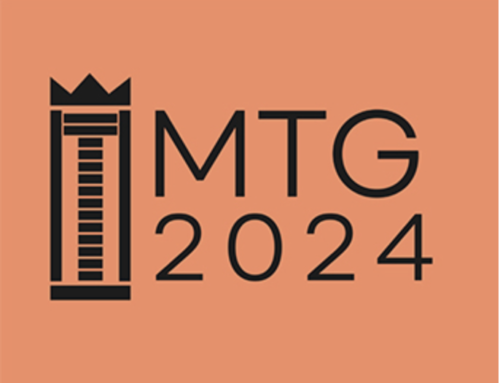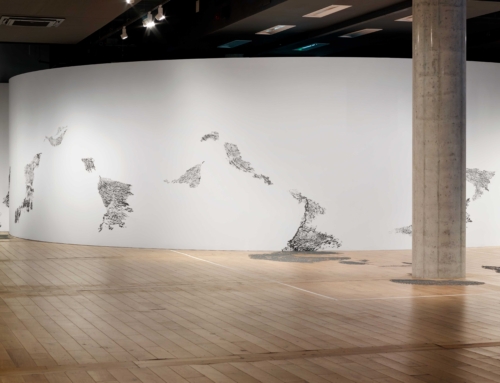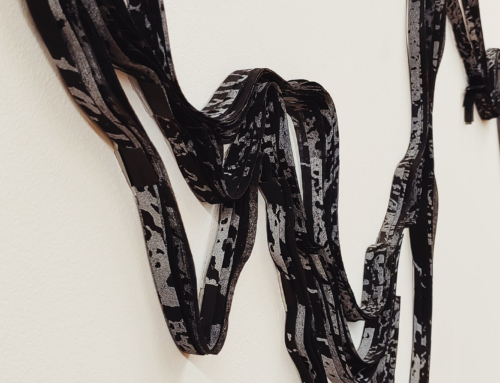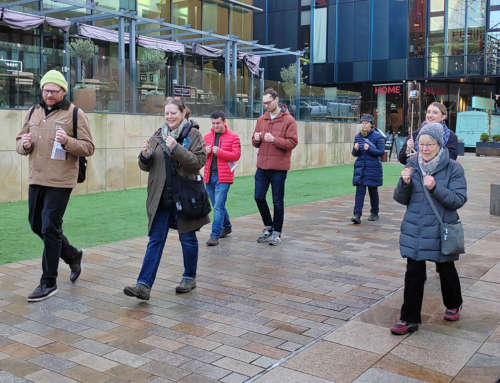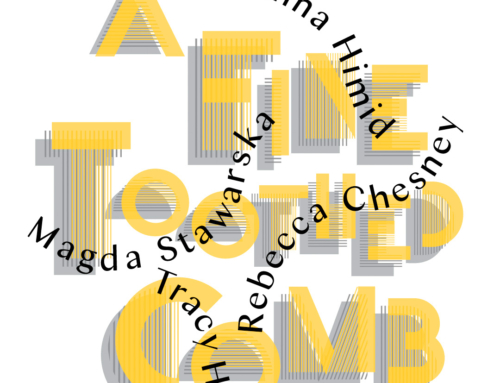The invitation to visit and participate in a short research residency was extended to me by fellow artists Dr Sarah Robinson, Jane Whelan, Dr Monika Lukowska, and Annette Nykiel after our work was exhibited together in Talking Place: Unfolding Conversations, 2019. This collaborative exhibition explored the significance of wetlands with a particular emphasis on Lake Walyungup.
Since meeting up at Impact 10 in Santander in 2018 there had been a regular communication between us in preparation for the exhibition that took place in May 2019. The four WA artists were working with a focus on Lake Walyungup and my work taken from Matrix of Movement offered a reflection of the wider global wetland conversation. The collaboration between us, the artists extended individual practices, offered multiple views and insights, the art became the conversation.
Sarah and I have known each other for nearly 20 years but have been working apart for the last 10 years. We decided to use the three weeks residency to reconnect our practices and see if overlaps in our practice led research revealed any new insights and potential connections for future projects.
I do not think either of us anticipated just how important this last three weeks would be. During multiple walking trips and conversations, some informal and some formal presentations at Edith Cowen University in Perth we realized that fundamentally our work explores extraordinary spaces, these are imaginary and have the potential to transport you through time and across disciplines.
The process of taking the scan data out of the computer and recreating an etching or drawing is key to the success of my work. However in many instances today artworks are viewed and experienced only within a digital platform where material aesthetics and embodied experience is removed. For Sarah and I this became apparent as Sarah described
“I perceived my imagined experiences of walking the mossy spongy surface of UK wetlands through viewing the handmade aesthetic in Hill’s work ‘Matrix of Movement’, at IMPACT10. Hill perceived my experience of walking Lake Walyungup online only”
It was only through subsequent conversations and visits to Sarah’s studio that I realized the true materiality of her work made in response to the Lake. Having visited the Lake during my residency on several occasions I suddenly had a new understanding of the Lake, the artwork contributing to a more complete narrative and new response to the Lake and its silent hidden history.
Ideas about above and below and hidden spaces became the focus of our walking conversations. My first impression of Lake Walyungup was one of overwhelming openness. Walyungup holds a shallow salt lake varying in depth with the seasons but never completely rising to cover the whole surface. Easily accessible this lake feels still and empty if you travel past on the freeway or walk on the wide artificial pathway along the edge of the lake created by dog walkers.
However, if you walk further into the lake towards the waters edge you are suddenly immersed in a multitude of sounds and surrounded by the variety of vegetation occupying the fringes of the lake. I realized that the biggest difference between Lake Walyungup and the mosslands of Greater Manchester was the visibility of the surface. My mosslands have a hidden transient surface, which must be understood from walking and responding to touch, its history revealed through layers of exposed peat and changing water levels. Lake Walyungup has a visible solid surface; its surface exposed as water levels change with the seasons, however, its history remains hidden and silent.
Both spaces having to adapt to a changing economic, political and social climate but both with their own embedded history and unfolding conversations.
During the residency Sarah and I were lucky enough to spend a day working with Joel Woodage, scanning consultant working with Riegl, the company who supported my previous residency in NSW in 2016. Joel kindly gave a day of his time to scan 2 locations with Sarah and I. We selected Point Perron and Lake Walyungup to explore using the Lidar scanning technology. The range of this equipment will potentially offer an extraordinary view of these locations, it will be exciting to begin working with the new scan data.
Returning from these 3 weeks of walking and conversation I am now reflecting on new experiences and the friendships that are embedded between art and place. I am eternally grateful to everyone who made me so very welcome but especially to Dr Sarah Robinson for her vision, knowledge and friendship and without whom my residency would not have been possible.






